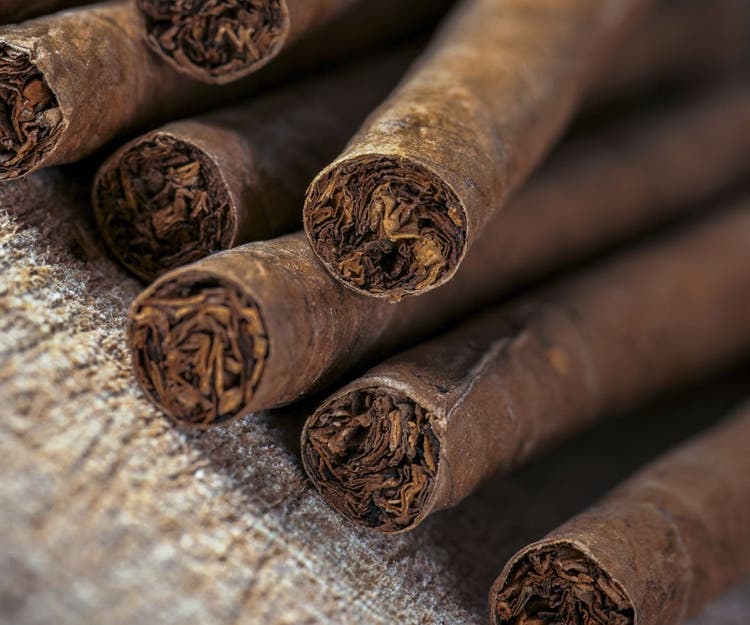
Harvesting Cigar Tobaccos by Stalk-Priming
The two main methods for harvesting dark air-cured (cigar) tobaccos are priming and stalk cutting. Priming is the most common harvesting technique used on premium cigar tobaccos while stalk – cutting is commonly used on broadleaf varietals. Today, both of these techniques are commonly used and recognized by learned tobacconists and consumers.
Another traditional, yet rarely employed harvesting technique is called stalk priming. Stalk priming is more labor, capital, and time intensive and we do not know of any commercial cigar makers currently employing this technique. Stalk-priming was probably common up until the middle twentieth century, especially in small scale production. While priming tobacco plants starts at the bottom of the plant and works upward, stalk-priming begins at the top and works downward. Stalk-priming involves harvesting approximately one pair of leaves per week and leaving the stalk/trunk (tallo) in tact to keep the leaf pairs together.
During stalk-priming, the harvesters use a small handheld knife with a curved blade to trim the stalk just below the leaves. They drape the leaf pairs (joined by a small piece of the stalk) over their arm and continue cutting until they can’t carry any more. Then the leaf pairs are draped over long sticks/poles (cujes) and left outside overnight, hanging about a foot off the ground. This overnight rest will allow sap and excessive moisture to leave the plant. The day after harvesting, the cujes will be hung in an air-curing barn (casa de tabaco) but they will take up much more room in the curing barn than their ‘regular’ primed counterparts. In addition, stalk-primed tobacco can take approximately 90 days to cure; about two to three times longer than primed leaves.
Clearly, stalk-priming takes longer and costs more, which is probably why it is not a technique commonly used today. It is likely that stalk-priming preceded priming and even that indigenous Americans used this technique long before Europeans discovered tobacco. We believe the process of stalk priming helps fortify the harvested leaves by leaving the stalk in place and providing a ‘to go’ container of nutrients.
Traditionally, and in small scale production, stalk-primed leaves in Cuba underwent their first fermentation in pilones, approximately one foot high, inside of the same barn where they were cured. This quick fermentation helped expel the remaining impurities in the leaf before being sorted, packaged, and transported for more vigorous burro fermentation later.
R&D on stalk-priming is ongoing.
By Jorge L. Armenteros, CMT | President & Founder, Tobacconist University.
Special thanks again to Jorge Armenteros at Tobacconist University for permitting Cigar Advisor to reprint this article that was originally posted in November, 2009.